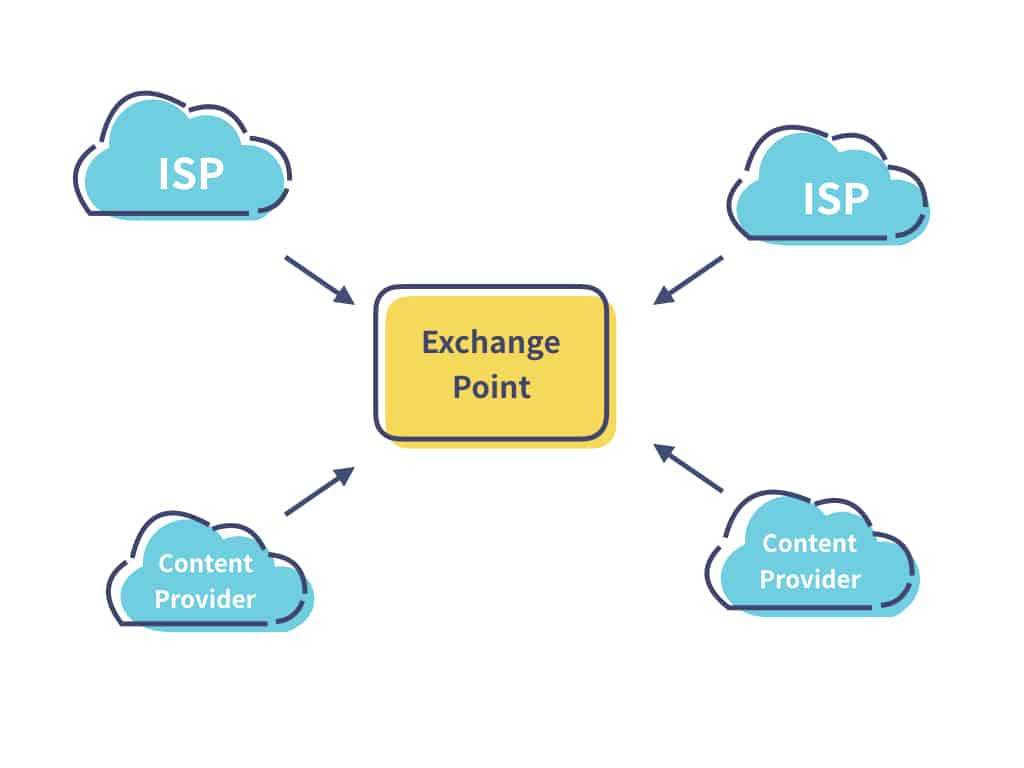An Internet Exchange Point can be defined as the physical infrastructure through which content delivery networks (CDNs) and Internet Service Providers (ISPs) exchange the Internet traffic between their networks. IXPs are not internet service providers but they allow various network operators to exchange traffic with other operators. An exchange point will not sell you anything resembling complete Internet connectivity. An IXP is more like a building block around which the internet is built.
It is often recommended to have a presence inside of an IXP location, so the time their traffic travels from other networks are greatly shortened, which also means the improvement of latency, round-trip time, and even costs.
What is an internet exchange point technically?
In technical terms, an exchange point is an Ethernet Switch, just like the one that connects computer systems in the offices. Basically, when a network connects to an IXP, it connects one or more of its routers to the exchange point’s Ethernet switch and sends its traffic to the routers of other networks through Ethernet switch.

There are different types of exchange points some connect multiple Ethernet Switches in different buildings while some use network protocols to carry traffic between those switches. But even when the IXPs use internet protocols, the hand-off to other networks is still done as an Ethernet connection.
Who connects to them?
Any network which wants to connect with other networks and exchange traffic can connect with an internet exchange point. In simple words, it can be explained as internet service providers (ISPs), who would sell Internet access to their customers. The different ISPs would interconnect with each other at the particular IXPs allowing their customers to communicate with each other.
In recent times, the typical IXP’s customers include content providers who peer with Internet Service Providers to deliver their content to the customers of ISP’s. The content providers also connect to internet exchange points to exchange traffic with each other.
Why are internet exchange points important?
The internet exchange point is important because without it all the traffic exchange between networks would potentially depend on an intermediary network which would be responsible for carrying the traffic from source point to destination.
Such intermediary networks are known as transit providers. In some scenarios, it’s perfectly alright to adopt this solution because a large portion of International Internet Traffic flows this way because it is a cost-effective solution to maintain direct connections to each-and-every ISP in the world. However, this cost-effective solution has some potential drawbacks too including adverse effects on performance because depending on a backbone internet service provider to carry the local traffic can have adverse effects on performance because sometimes the backbone carrier is sending data to another network which resides in a completely different city.
How IXPs utilize border gateway protocol (BGP)?
A BGP lets the network to communicate with each other. In an IXP’s local network, different network providers are capable of creating 1-1 connections using the Border Gateway Protocol. The BGP was developed to allow disparate networks to disclose their IP addresses to each other. The BGP also allows networks to disclose those IP addresses that they have provided connectivity to downstream (i.e. their customers). When two networks set up a BGP session, their routers are exchanged with other and traffic can flow directly between them.
